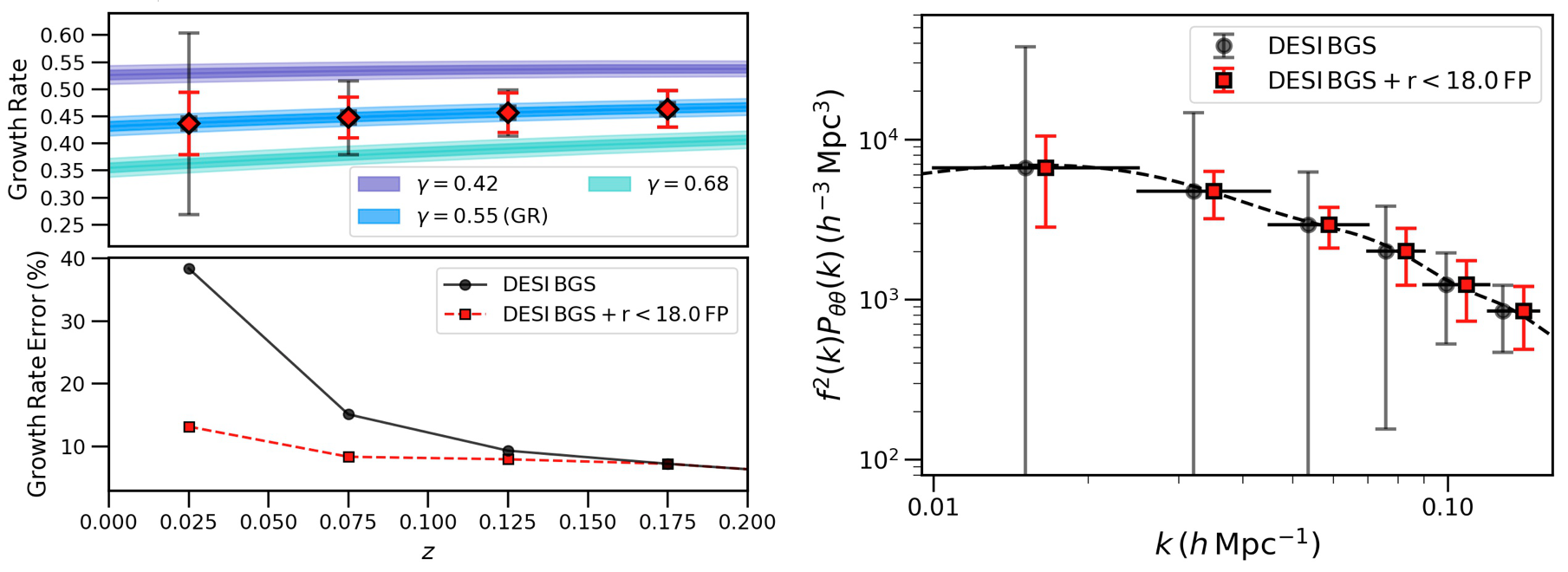Joan Najita (NOIRLab)
16 February 2024
BaoBan, DESI’s ambassador for Education and Public Outreach, made a recent appearance at the 85th Annual Tohono O’odham Nation Rodeo and Parade, featuring prominently in the parade entry from Kitt Peak National Observatory (KPNO). A coyote from the wilds of Arizona, BaoBan has previously appeared in comic strips and other DESI-related public engagement activities. The DESI project is being carried out at KPNO, which is located atop I’oligam Du’ag, in the homeland of the Tohono O’odham Nation.

At this year’s rodeo parade, held 3 February 2024, KPNO entered a float decorated with images of BaoBan, planets, stars, and telescopes. Sarah Logsdon, one of the NOIRLab volunteers who accompanied the float along the parade route, was thrilled to see spectators drawing their grandchildren’s attention to the pictures on the float and connecting them to the written words for these, which were posted on the float in both O’odham and English.
Baoban’s name, which was selected by the Tohono O’odham Nation Youth Council, combines several ideas. “Bao” is reminiscent of the sound the coyote makes and is also the acronym for “baryon acoustic oscillations”, a technique DESI is using to study the nature of dark energy and the expansion history of the universe. “Ban” is the word for coyote in the Tohono O’odham language. “BaoBan” is also the short form of “Ba: ‘o ñia g Ban” meaning “Where is coyote looking?”, which symbolizes our exploration of the wonders of the universe with DESI. Read the full story of BaoBan’s origins at https://www.desi.lbl.gov/2023/05/11/the-new-desi-ambassador-baoban/.
This was the first year Kitt Peak has entered a float in the rodeo parade. BaoBan brought good luck and the KPNO team was happy to learn that their float received first place in the business category. Congratulations to the team and thank you BaoBan!











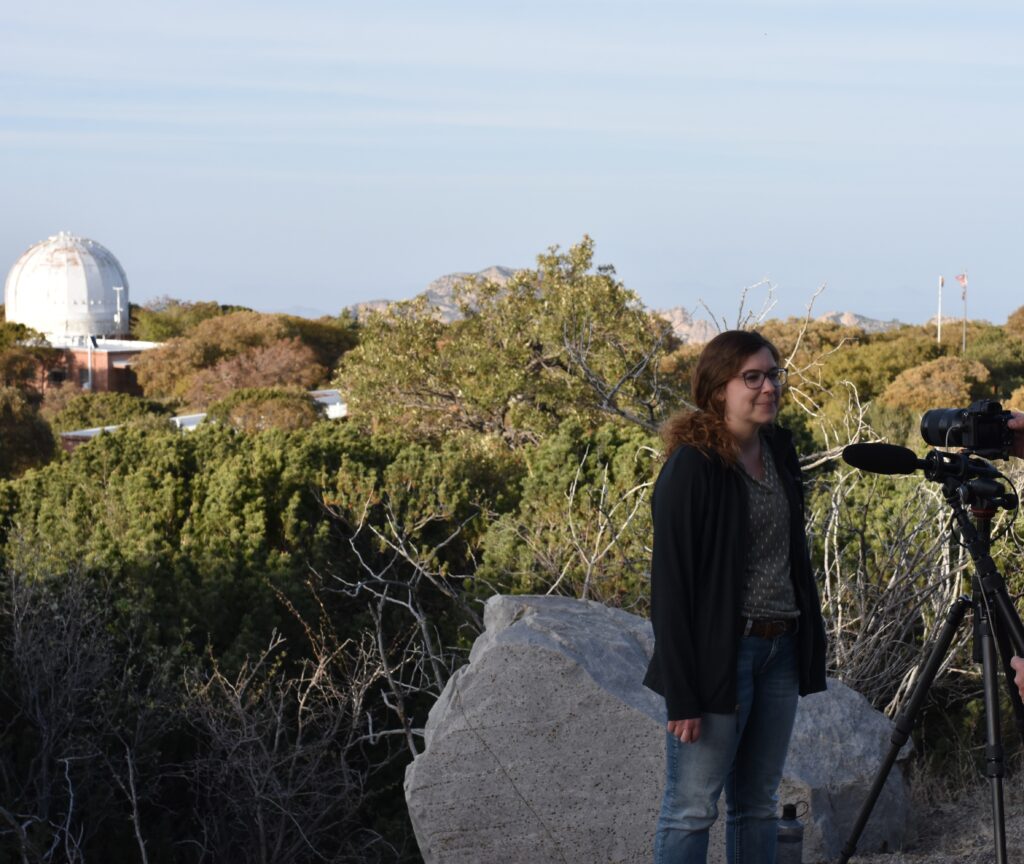









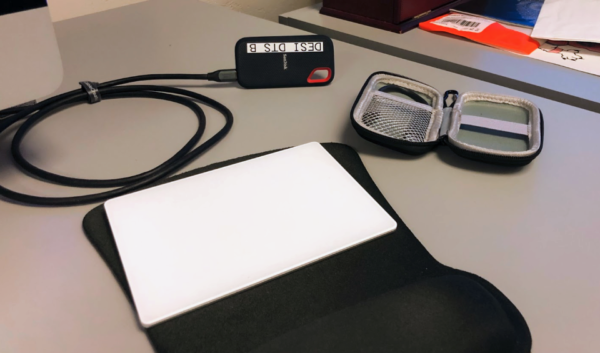






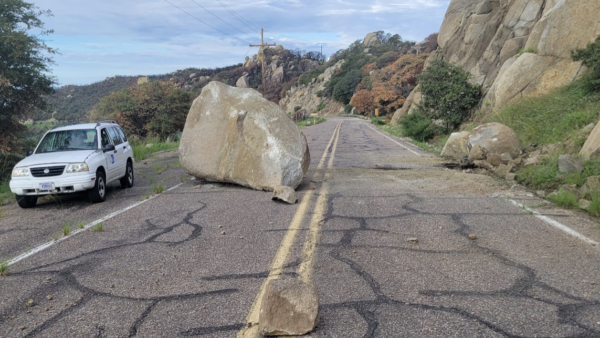



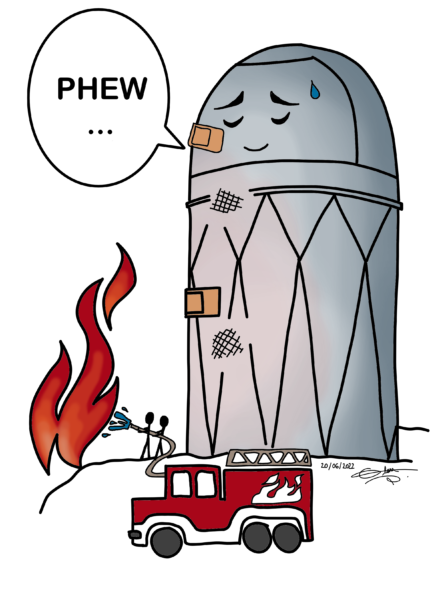




 In honor of the opening of our online shop, I made a special DESI-gn that highlights both the science and instrumentation parts of our collaboration. “Dark Energy” is represented by a map of large-scale structure, and “Spectroscopic Instrument” is represented by our focal plane and its 5,000 robotic positioners.
In honor of the opening of our online shop, I made a special DESI-gn that highlights both the science and instrumentation parts of our collaboration. “Dark Energy” is represented by a map of large-scale structure, and “Spectroscopic Instrument” is represented by our focal plane and its 5,000 robotic positioners.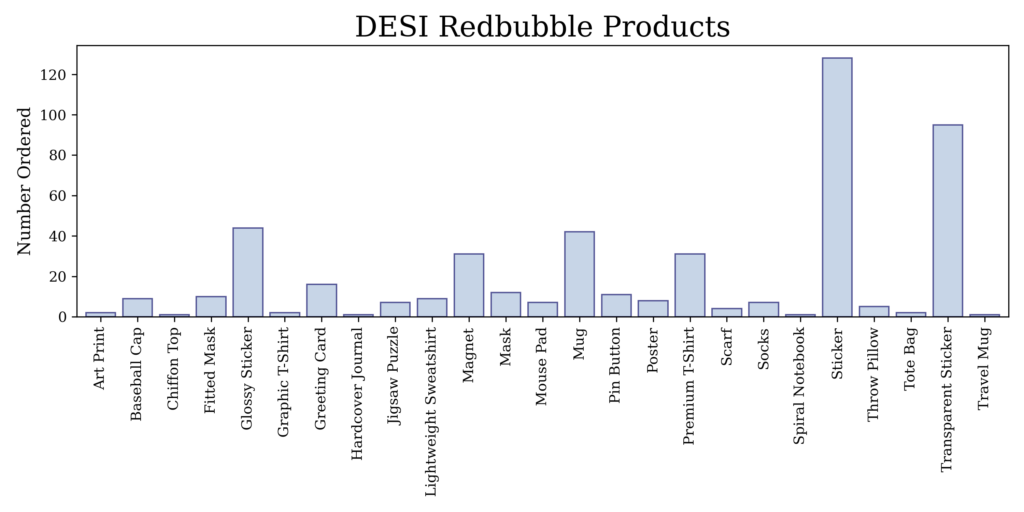

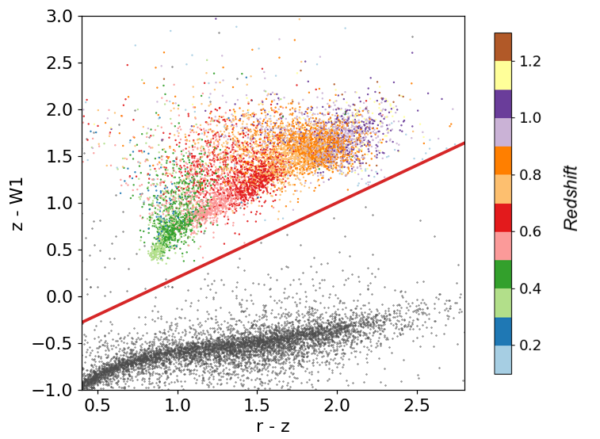 LRG selection is done by the cut (red line) in the (r – z) – (z – W1) space. This selection uses the W1 infrared band to separate galaxies (color points) from stars (grey points). The different colors show the redshift of the galaxies in the color–color space. This selection will observe ~615 targets per square degree. (See Zou et al., in prep.)
LRG selection is done by the cut (red line) in the (r – z) – (z – W1) space. This selection uses the W1 infrared band to separate galaxies (color points) from stars (grey points). The different colors show the redshift of the galaxies in the color–color space. This selection will observe ~615 targets per square degree. (See Zou et al., in prep.) To avoid stellar contamination (black smooth line) in the target selection, ELG selection uses a cut in (r – z) – (g – r) space. The color histogram is the redshift distribution of ELGs in the color space. This selection will observe ~2,387 targets per square degree. (See Raichoor et al., in prep.)
To avoid stellar contamination (black smooth line) in the target selection, ELG selection uses a cut in (r – z) – (g – r) space. The color histogram is the redshift distribution of ELGs in the color space. This selection will observe ~2,387 targets per square degree. (See Raichoor et al., in prep.) Only point sources are considered during the selection and the target selection aims to separate quasars from stars. However, the separation between these two classes is less obvious than in the previous cases. A more sophisticated selection has to be applied. Quasars are selected via a Random Forest classification instead of the classical color cuts selection done in previous spectroscopic surveys. The idea of the selection is to separate quasars from stars based on the “infrared excess” of QSOs. The stellar locus is illustrated by the red line and the quasars by the blue/green/yellow points. This selection will observe ~308 targets per square degree (see Chaussidon et al., in prep.).
Only point sources are considered during the selection and the target selection aims to separate quasars from stars. However, the separation between these two classes is less obvious than in the previous cases. A more sophisticated selection has to be applied. Quasars are selected via a Random Forest classification instead of the classical color cuts selection done in previous spectroscopic surveys. The idea of the selection is to separate quasars from stars based on the “infrared excess” of QSOs. The stellar locus is illustrated by the red line and the quasars by the blue/green/yellow points. This selection will observe ~308 targets per square degree (see Chaussidon et al., in prep.).




